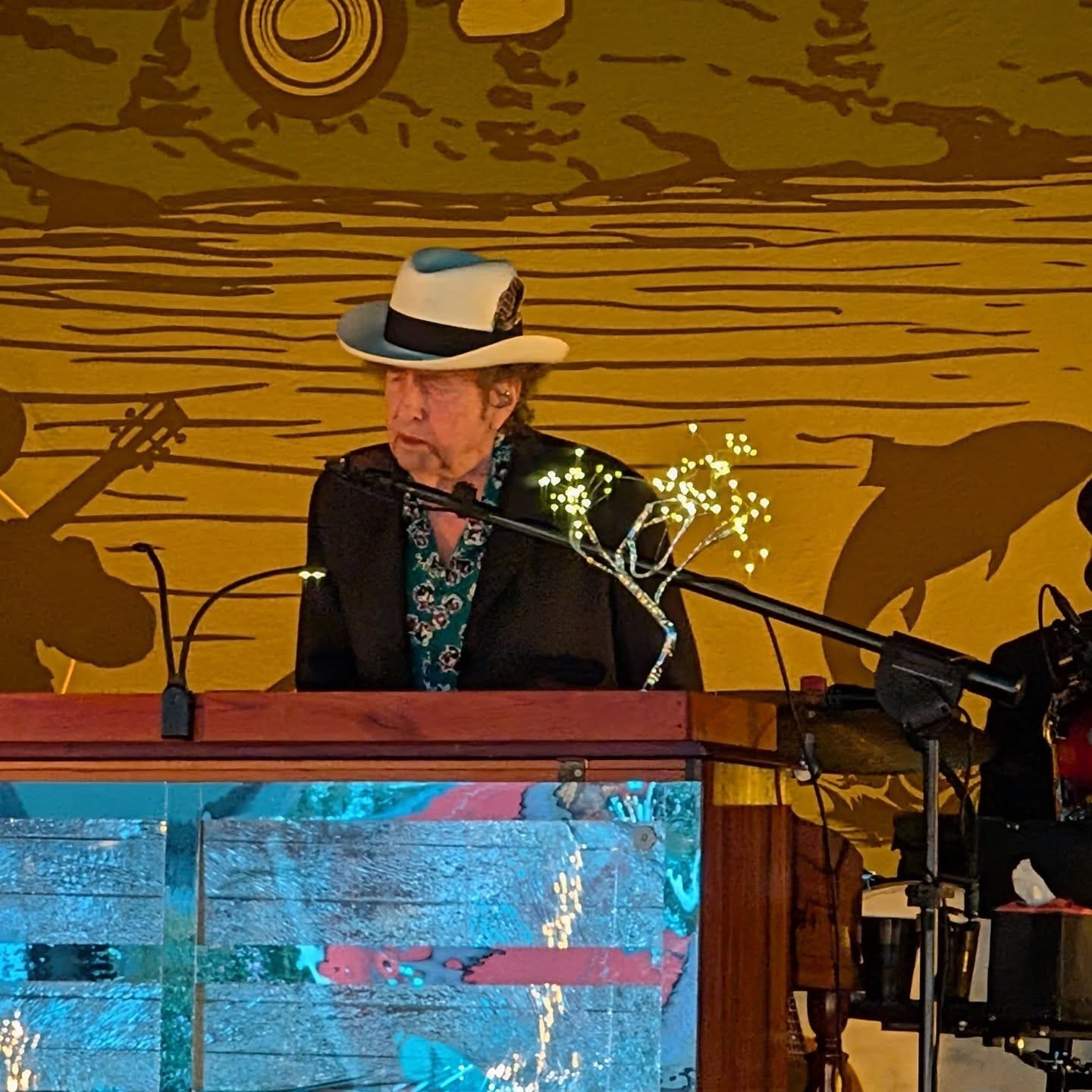Last Night in Darien Lake (by Bruce Eaton)
2025-08-08, Darien Lake Amphitheater, Darien Center, NY

Last night, Dylan played “Masters of War” for the first time since 2016. Maybe even more notably, it was the first time ever it opened his show. The show was outside Buffalo in Darien Lake—the site of Dylan busting out the wrench last year. Bruce Eaton, a retired jazz concert producer and the author of a 33 1/3 book on Big Star’s Radio City, was on the scene and reports in.
When did I become a Dylan fan?1 I can’t pinpoint the exact date but do know that in fall of 1965—as a 12 year-old living in suburban Buffalo, NY—I wrote Bob a fan letter asking for an autograph. I’d previously had success writing my favorite baseball players with similar requests. With a nice personal note attached to a self-addressed stamped postcard, I had a 100% hit ratio with all my beloved Pittsburgh Pirates (thank you, Roberto Clemente).
As rock and roll pushed baseball aside in my adolescent brain, I thought I’d try my autograph strategy on rock stars. All of the British bands across the Atlantic seemed too far away to be real people. Dylan lived in Greenwich Village—as it turned out, just around the corner from my grandmother’s apartment on Washington Square. I could picture him walking underneath her window overlooking the chess boards. In my letter, I complemented the bard on his poetry and asked if he could write out a verse of the recently released “Positively 4th Street,” figuring that by not asking for an obvious choice like “Blowin’ In The Wind” or “Like A Rolling Stone” he’d know that I was a true fan. A few weeks later I got back my envelope and paper with a signature on one sheet. I filed it away for posterity and soon came to understand how highly unlikely it was that Bob Dylan was personally answering his mail. Okay then, but still a good story.2
I could not have possibly imagined back then that sixty years later I’d be taking an 11 mile drive from my home to see Bob for the umpteenth time. As I’ve aged, Bob is the only artist who remains an automatic “go see” for me when he’s in the region, even when that involves going to the Darien Lake Performing Arts Center. While the “PAC” moniker might conjure up an image of symphony orchestras, light opera, and Broadway revues—maybe even a Moody Blues tribute band—in reality it’s yet another soulless concrete pad with a big burnt-out lawn out back, all tacked onto a second-rate amusement park originally known as Darien Lake Fun Country. The outbuildings around the amphitheater give it a real trailer park vibe. Overall, it’s that rare place where you can get a corn dog that’s scorching hot on the outside and frozen solid in the middle (an event that traumatized my then-toddler son for life, or so he claims). In other words, a dump, thirty-some miles east of Buffalo and right down the road from the long-time residence of Mark David Chapman.
The venue presents serious music fans with a hard choice: is it all worth it, knowing full well that the Chainsaw Massacre zombies walking back and forth across your sightline (and back and forth and…where are they going, and do they ever get there?) or the Bud Light-fueled incessant chatterers might awaken previously unknown homicidal impulses? For me, the prime experience of a Dylan performance is catching all the little nuances. The micro-interplay between the players. Bob’s never-the-same-twice vocal interpretations. The ever-shifting arrangements. Bob’s nods and cues, smiles and frowns. These are the things that for me make a Dylan concert unlike few other experiences in our world: spending time in the presence of a genius for the ages who is still creating in the moment, not recreating past glory. An enormo-shed is far from the ideal environment to say the least.
On the other hand, we all have to accept that opportunities to hear Bob live might necessarily soon dwindle and then inevitably come to an end. Father Time remains undefeated, as even Frankie Valli will eventually learn. So, reinforced by great memories of an incendiary performance by Bob at Darien in 1997—one that recharged my interest to an atomic level—I headed down the road.
Keep reading with a 7-day free trial
Subscribe to Flagging Down the Double E's to keep reading this post and get 7 days of free access to the full post archives.
